How to find and resolve "AMP issues" in Search Console.
Learn how to find and fix AMP issues in Search Console with our comprehensive guide. Get your website optimized for better search visibility.
What are "AMP issues" in Search Console?
Google Search Console's AMP (Accelerated Mobile Pages) issues pertain to problems or errors encountered in the implementation or rendering of AMP pages on a website. AMP, an open-source initiative by Google, aims to enhance mobile web performance and improve user experience. Here are five crucial points to consider regarding AMP issues in Google Search Console:
- Mobile-Friendly Experience: By addressing and resolving AMP issues, you guarantee a seamless mobile browsing experience, as AMP is specifically designed for optimal performance on mobile devices.
- Enhanced Search Visibility: Fixing AMP issues ensures that your AMP pages become eligible for prioritized display in Google's mobile search results. This increased visibility can lead to a higher number of clicks and organic traffic.
- Website Performance: Resolving AMP issues contributes to faster loading times for your AMP pages, resulting in improved overall website speed. This optimization positively impacts user engagement and conversion rates.
- SEO Impact: By rectifying AMP issues, you showcase your dedication to enhancing user experience. This commitment can potentially boost your website's search engine rankings, considering Google's emphasis on page speed and mobile-friendliness.
- Ad Revenue: Properly addressing AMP issues guarantees accurate rendering of ads on your AMP pages, maximizing their visibility and revenue-generating potential. This is particularly crucial for ad-dependent revenue streams or specific ad agreements tied to AMP pages.
How to find and resolve "AMP issues" in Google Search Console:
- Log in to your Google Search Console account.
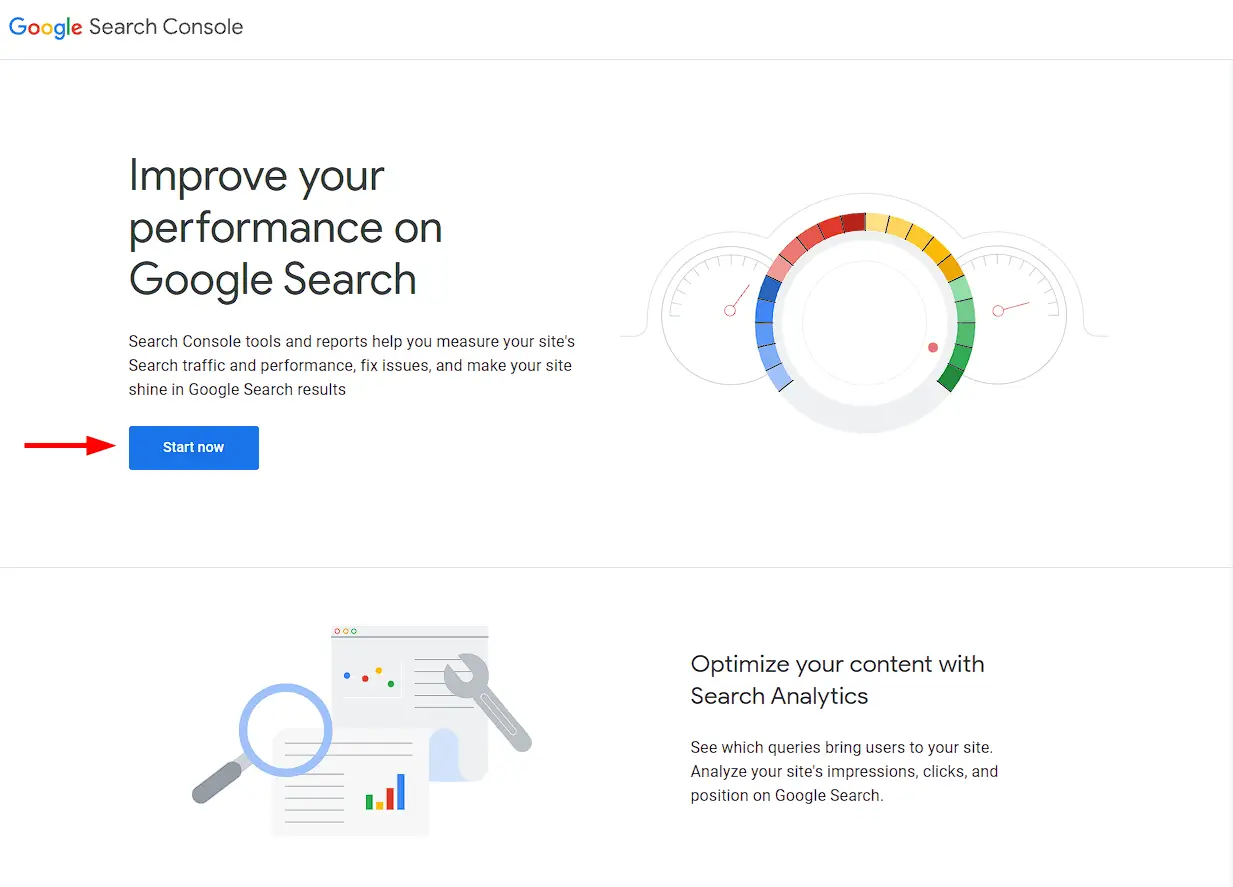
- From the Search Console dashboard, select the website property for which you want to resolve sitemap issues. Make sure you have verified ownership of the website.
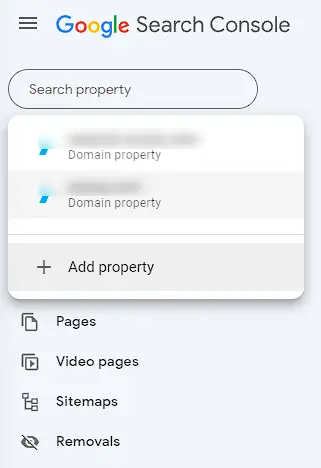
- In the left-hand menu, click on "Enhancements" and then select "AMP" to access the AMP report.

- The AMP report will display a list of issues detected on your AMP pages. Review the issues listed, which may include critical or non-critical errors or warnings.
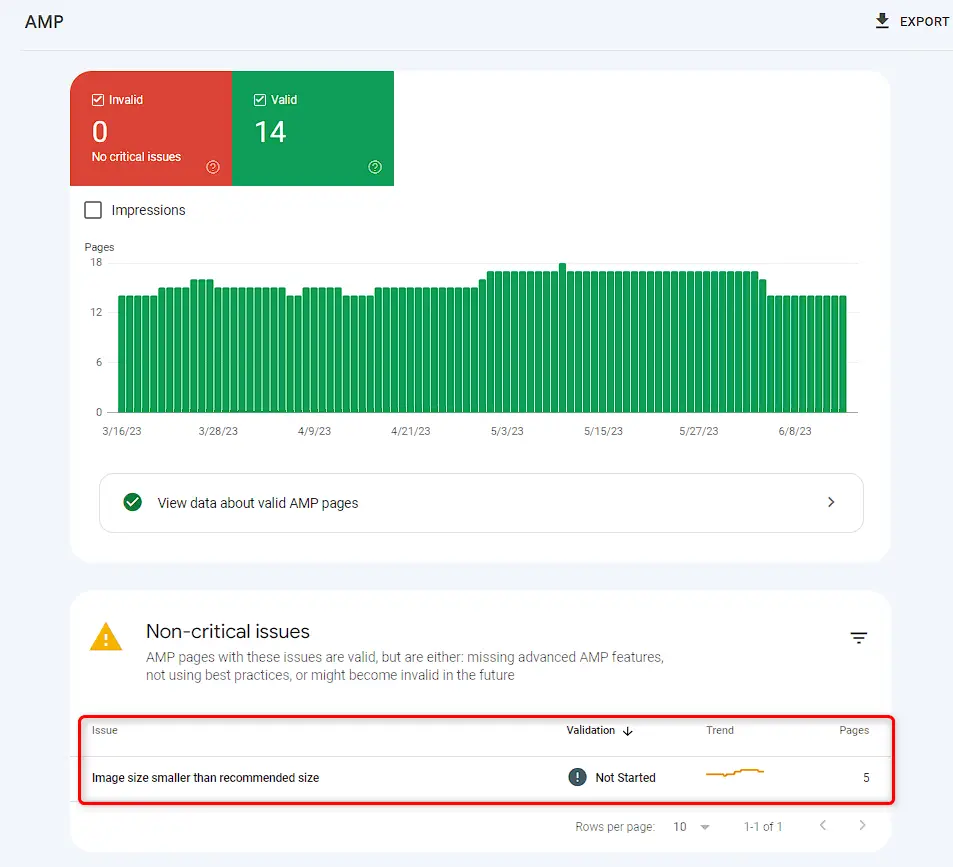
- Click on each issue to get more details and understand the specific problem affecting your AMP pages. Google Search Console will provide information about the affected pages and the nature of the issue.
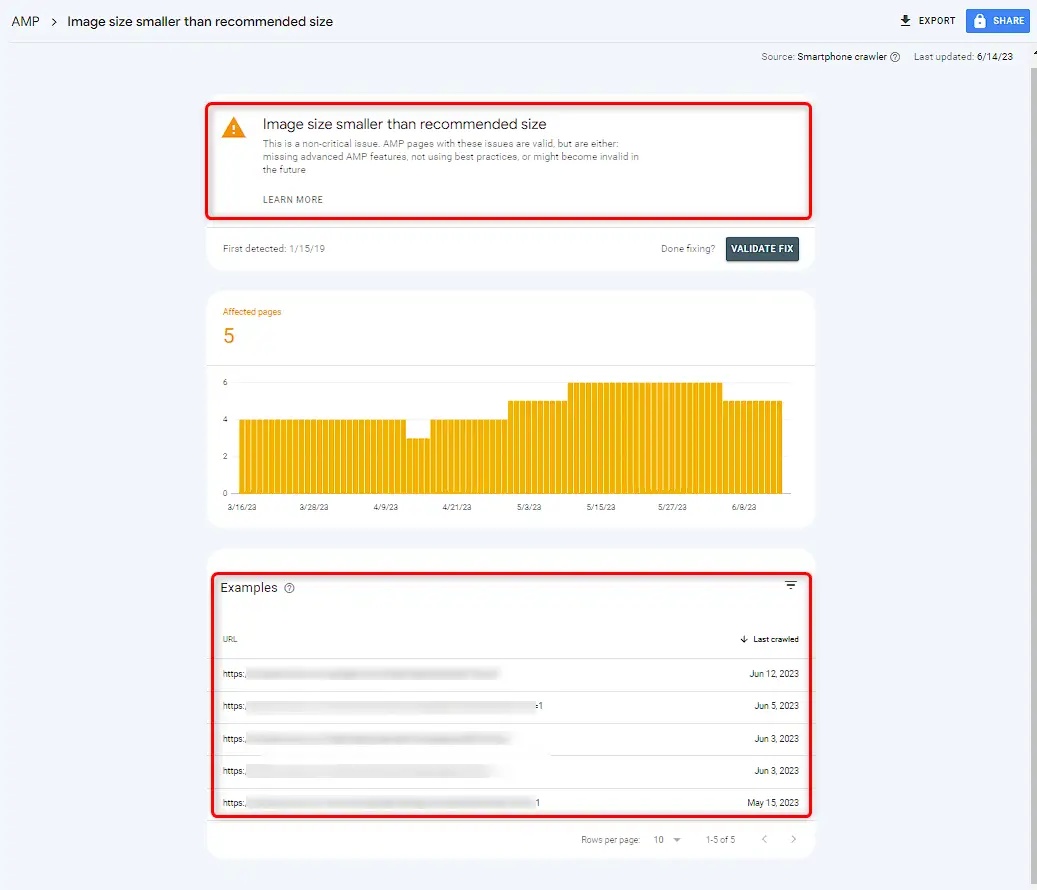
- Resolve AMP Issues: Depending on the nature of the issue, follow the appropriate steps to resolve them. Some common AMP issues and their potential solutions include:
- Validation Errors: Review the specific error messages and fix the corresponding HTML markup or AMP code on your pages.
- Structural Issues: Check for missing or incorrect AMP tags, ensure required elements are present, and make necessary adjustments to adhere to AMP guidelines.
- URL Mismatch: Verify that your canonical URLs match the corresponding AMP URLs and adjust any discrepancies.
- Server Configuration: Ensure your server is properly configured to deliver valid AMP content, including correct caching, HTTPS setup, and responsive design.
- Content Issues: Address any issues related to missing or insufficient content on your AMP pages, such as missing metadata, required elements, or structured data.
- Image Issue: AMP's structured data requires an image larger than the recommended size. Failure to meet this requirement may limit the visibility of AMP-related features on Google Search and restrict the appearance of large images on your Discover cards.
- After making changes to address the AMP issues, test your AMP pages using the AMP Testing Tool provided by Google. Enter the URL of your AMP page to verify if the issues have been resolved.

- If the AMP issues have been resolved, Validate the affected AMP pages for re-indexing. This helps Google recognize the changes and update the search results accordingly.
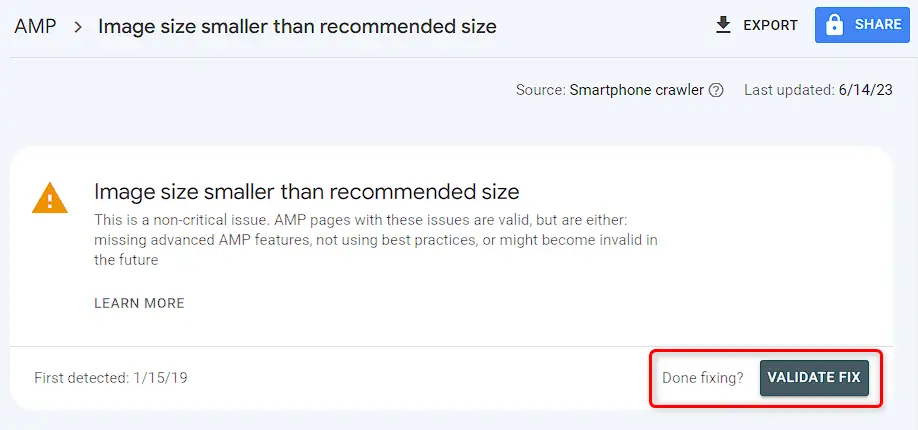
- Keep an eye on the AMP report in Google Search Console to ensure that the resolved issues no longer appear and that your AMP pages are error-free. Regularly check for new issues and address them promptly.
By following these steps, you can identify, resolve, and maintain a healthy AMP implementation for your website, ensuring a better mobile experience, improved search visibility, and enhanced performance.




